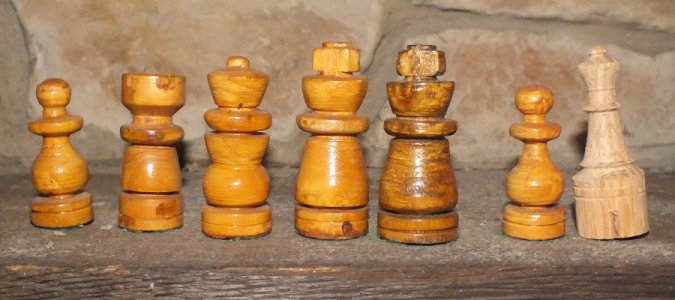Sometimes Jerbyl Machine Programmer has a "G" instead of a "J". It's "Gerbyl" in the title of the pdf. It's "Gerbil" on your website. It's a little confusing. I also wonder whether naming the program any version of "Jerbyl" might be confusing being that the firmware GRBL is pronounced the same way.
Do you plan to market your software?
I have not heard or read of someone using a CNC rotary table as the headstock of a lathe, for making threads. To me, it seems clever and elegant.
Thank you Karl for pointing out my oversight, I changed the name in the title of
the PDF so that it now is spelled Jerbyl. I also advanced the date in the file name
to reflect the change. The program could be pronounced as Jer-Bill instead
of Jerbuhl and that might help some. Another thing that could be done is that
the software is called Jerbyl Machine Programmer and its executable is JMP.EXE.
It could be pronounced as "Jump" and that might serve to alleviate the
confusion. I will also change the spelling on the website so that it will match.
My intent is to obsolete the spelling "Gerbil".
I have created a YouTube channel called "Jerbyl Machinist". It was originally
"Gerbil Machinist" but I changed the name for reasons discussed here.
I read that the suggested pronunciation of GRBL by the author himself was "Garble".
So the two should not be confused in that way. The name of the Jerbyl software was
inspired by GRBL because that subsystem is used for control by the software. I decided
to change the name of the software in order to emphasize pronunciation with a "J"
sound as in "Joker" and not a hard "G" sound as in Google (or Garble or even Gurble).
I have seen YouTube videos of people pronouncing GRBL as Jerble and I'm sure they
are not aware of its author's intended pronunciation. In my mind "Jerbyl" and "Garble"
or even "Gurble" should be different enough in both spelling and pronunciation to avoid
confusion. But I intended them to be related at the same time from the start. It was my
failure to make all of the changes everywhere it exists on the Internet.
The logo of the software is that of the rodent's name and I have never seen GRBL
associated with the rodent. So the likeness is intended but this is at risk of
confusion. If users end up calling it "Jump" then that will be okay with me.
To answer your question, it is my intent to commercialize it for sale at some point.
Right now I am having so much fun with it making things and such, I know that
having users would inevitably take some of the fun out of it. Because I am a
programmer myself, I feel it is the primary way that machines should be
controlled when you, the machinist, know what the geometries are so you know
how you want your tool paths to be. This especially applies to modifications
of existing parts since CAD programs virtually insist on making the whole
thing from a block of raw stock. It is more artistic/organic sorts of creations
where you would need a CAD program to turn a model into a hard copy. The
programming would just be too cumbersome and, therefore, far too much
work. But 95% of the things I've done are based on simple geometries so
I think that JMP is the ideal way to go in a great many projects.
I spent the last few of days rewriting the arc control software because, I
think, those features never fully made it into the current version. The next
project I am planning to do depends on it and it is now working in the
current version.
One feature that was in the first version and never made it into the newest
version is a function that will import geometry from an OBJ 3D model file
and automatically produce code that will cut a profile on a lathe. I made
one chess piece using this feature and it is sitting on a mantle next to some
other much older chess pieces I made as a teenager around the year 1970.
The "lathe" I used to make them was made from an electric can-opener
motor with some bent coat-hanger wire that I shaped with a pair of pliers.
My cutter was a kitchen knife. See attached photo. The six pieces on the
left I made over half a century ago. The one on the right was made using
an earlier version of JMP. It still has not be cut off its base, sanded and
finished. I designed a full set of models in Lightwave 3D but only made
the Queen (out of oak). The older pieces are made from fallen branches
of a tree (perhaps elm) from our property in Denver where I grew up. I
aborted the project of doing a whole chess set using CNC after deciding
to do a full rewrite of the software (twice).
Paul


